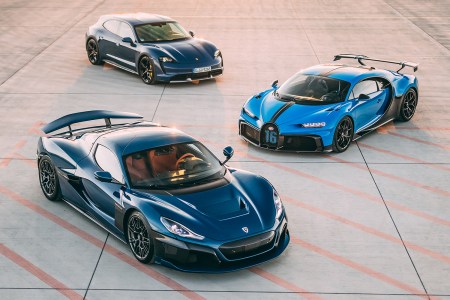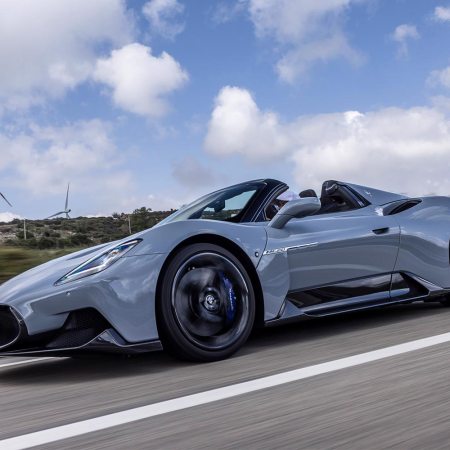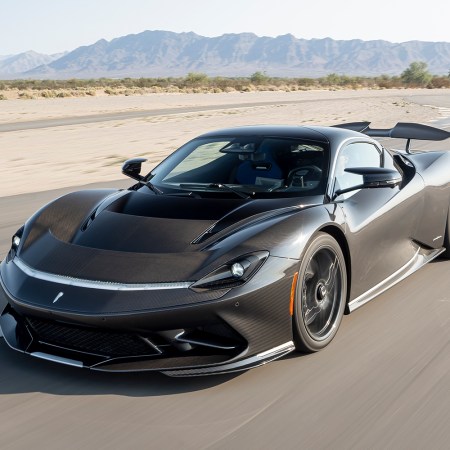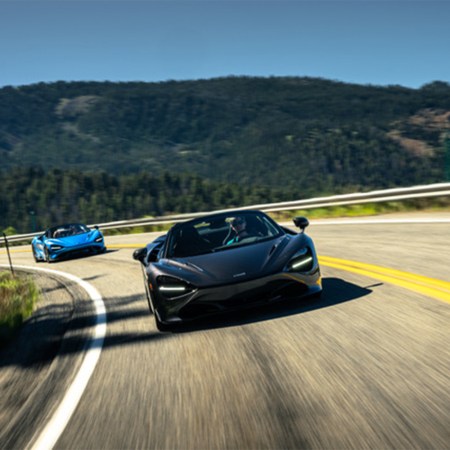Somewhere in northwest Austin, the serpentine Ranch Road 2222 winds around the cliffs high above the city’s namesake reservoir. When it rains, that twisted stretch of tarmac can be a harrowing drive. When it rains while you’re driving a borrowed $2.1 million electric hypercar with twice the horsepower of the original Bugatti Veyron, well…you better have a fresh pair of skivvies at the ready. Or you could just keep it very light on the pedal.
After driving just 30 or so miles in the 1,914-horsepower Rimac Nevera in the rain, I thankfully return the Polar White machine in perfect condition. No scratches. No dents. I, however, am soaking wet. Not because of the rain — I’ve sweat through my T-shirt (and onto the red Alcantara driver’s seat). Although I’ve driven hundreds of cars in my career, the Nevera is unlike any of them. It’s a visceral powerhouse, excessively capable and eerily docile at the same time.
When you press the pedal, you hear the whine of its four motors at the corners, uniting to send the carbon fiber monocoque (and you in it) hurtling forward at a rate that feels entirely novel, which it is. The Nevera has notched several impressive feats since its arrival. It hit a top speed of 258 mph, earning it the title of the fastest electric production car in the world; and it set another record with its independently verified 8.582-second quarter-mile run, making it the world’s fastest-accelerating production car. This record isn’t just for EVs — it’s for all production cars, including internal combustion masterworks like the McLaren 765LT and Ferrari’s LaFerrari.
The thing is quite nuts.
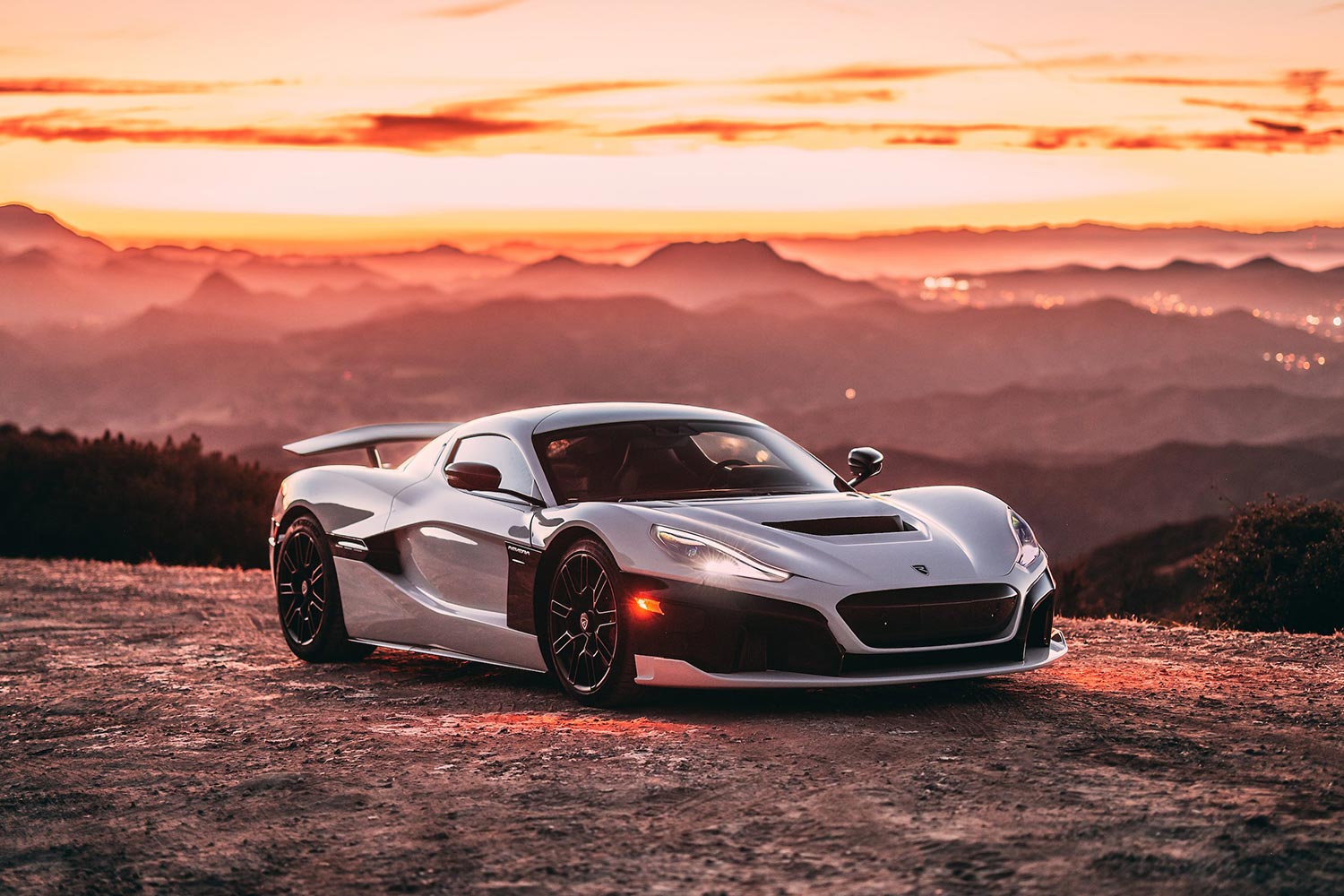
Croatia may not have a comprehensive national space program, but it can certainly boast about the Nevera, which is somewhat of a roadgoing spaceship. Its innovative drivetrain features four carbon-sleeved permanent AC synchronous motors that independently power each wheel through a direct-drive transmission. The motors are powered by a 120-kWh battery pack and produce a combined output of the aforementioned 1,914 horsepower and 1,740 lb-ft of torque. Accelerate hard and you feel a gut punch in your stomach, not just immediately, but for hours afterwards, even when the adrenaline rush wears off.
Despite all that power, the hypercar is relatively easy to drive. An all-wheel torque-vectoring system calculates and deploys the optimal amount of torque over 100 times per second. That system, combined with its bespoke Michelin tires, makes the Nevera feel sure-footed, even in the rain, and even at speed. The steering is quick. The ride is composed. Even if you don’t test its limits by going from 0 to 60 mph in 1.85 seconds or by approaching its top speed of 258 mph, it’s still thrilling. (If you choose not to approach those limits, the upshot is a respectable EPA-estimated range of 205 miles.)
What You Need to Know About Rimac, The Croatian EV Maker That Bought Bugatti
The two supercar companies, along with Porsche, could form an unstoppable automotive teamA powerful regenerative braking system can generate up to 300 kilowatts of stopping force, allowing the car to decelerate at a rate of 0.4 g. Lift your foot off the accelerator and the electric motors reverse their direction to slow down the car while simultaneously generating electricity to recharge the battery. And when one-pedal driving won’t do it, the Nevera is also equipped with 15.3-inch carbon-ceramic brake discs and six-piston Brembo calipers.
The biggest surprise, to me at least, is that the Nevera has an attention to detail and quality that’s on par with supercars from Italian manufacturers like Lamborghini. Rimac is, while not quite a startup, a rookie player in this world. But even as the new kid on the block, they’ve already shown they can hang with the big dogs in terms of fit and finish. Carbon fiber is present across the dashboard’s center fascia, as well as around the center console and covering the steering column. Suede and shiny billet aluminum are finished with precision.
Technology abounds, but doesn’t feel oppressive. Three screens display information for the driver, the passenger, and both on the center console. The top section of the cockpit is dedicated to performance and driving, while the lower section houses the infotainment system, climate controls and other information. Three rotary dials allow you to adjust the climate and select drive modes. On the right side of the center console is a dial that allows the driver to control how much torque is sent to the front or rear motors. It’s a smart setup.
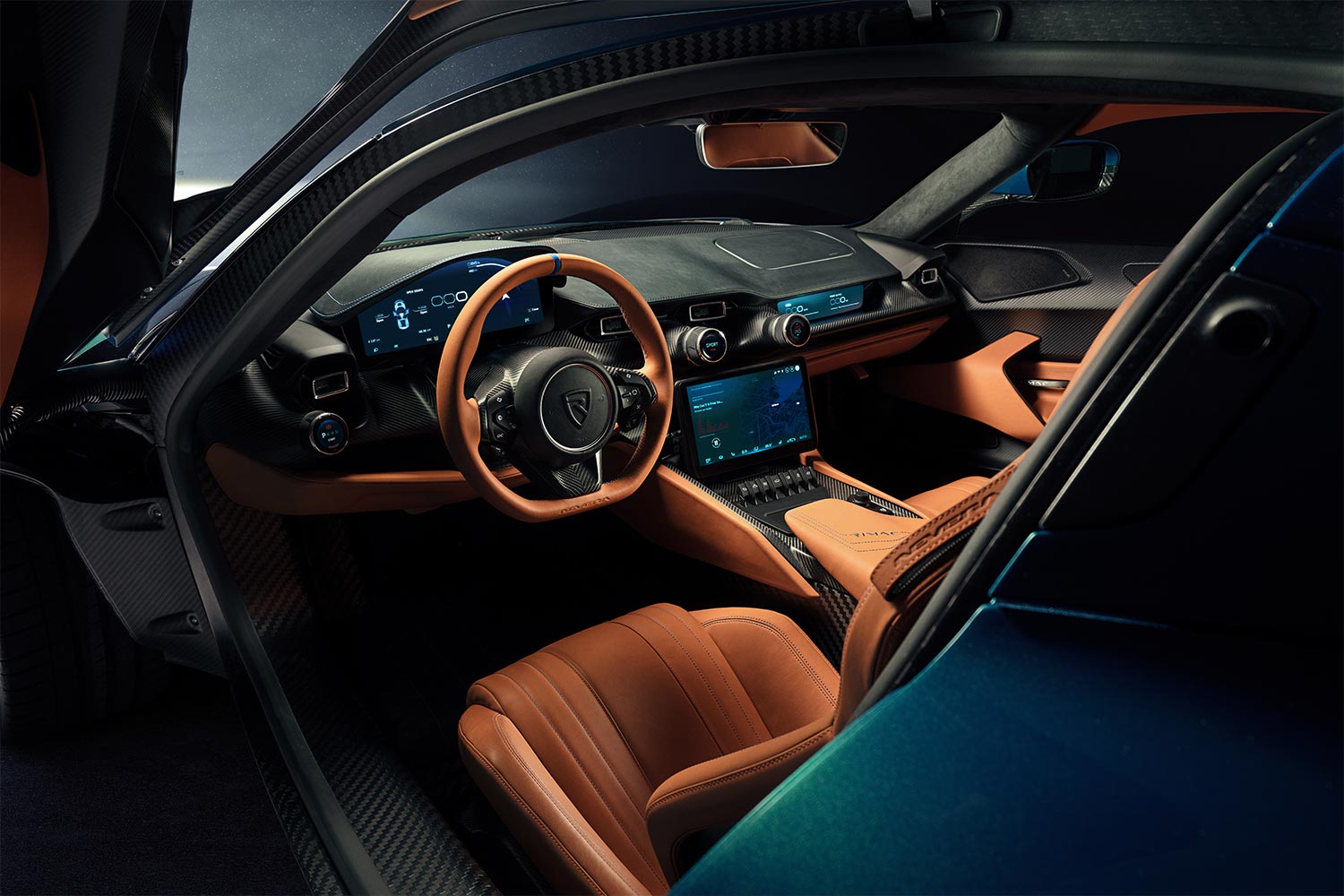
Take a walk around the hypercar and you realize that its design is function-first, and aerodynamics above all else. Rimac’s trademark “necktie” design can be found on its sides, which works both as an aesthetic element and part of the car’s aerodynamic profile. The roofline reaches its highest point exactly between both axes, and a single, smooth line wraps around the car, giving it a seamless feel.
So just where did this spaceship come from? A mysterious figure you might have never heard of, unless you’re a hardcore car guy: a 35-year-old Croatian named Mate Rimac (that’s mah-teh ree-mats). When Rimac was 19 years old, he converted a 1984 BMW 3-Series into an electric car in his garage using parts from a forklift. Rimac used the car as a testbed for the electric technology he was developing, and competed in motorsport events, beating conventionally-powered vehicles.
In 2009, Mate made a business of his passion, founding Rimac Automobili. Two years later, the company unveiled its first model, the Concept One, a two-seat, high-performance electric car designed and manufactured in Croatia. The vehicle’s proof-of-concept technology attracted major backers. In 2018, Porsche purchased a 10% stake in Rimac to establish a development partnership, which the company increased by $70 million in 2021; now they own nearly a quarter of the company. Hyundai and Kia made a joint investment of $80 million in the company as well.
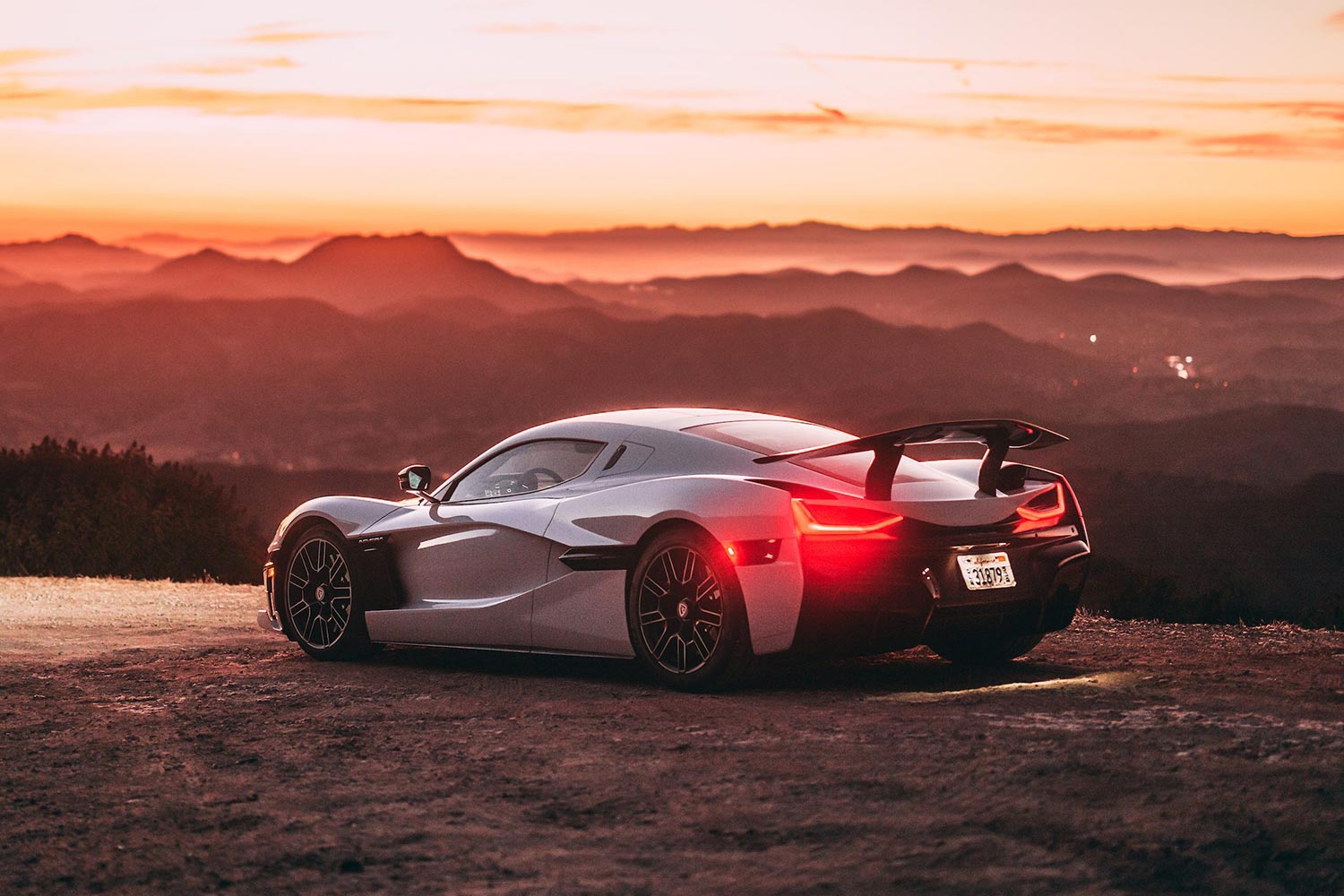
Rimac has made some notable investments itself, in a bit of roundabout corporate structuring, acquiring a controlling interest in Bugatti from Volkswagen Group. Mate Rimac has ambitious plans for the French brand: He aims to diversify Bugatti’s ultra-luxe lineup with electric powertrains. By 2030, Bugatti plans to release two new models that have been engineered by Rimac. The first will be a hybrid that combines gasoline and electric power; the second will be a fully electric vehicle.
All this business talk is just to say: what a long way this company has come since the late 2000s, when Mate Rimac was tinkering with electrification in a garage in Croatia.
As I turn in the Nevera after my test drive, I take a look at a plaque at the rear of the cockpit that indicates that this particular car was the ninth one built out of a limited run of 150 (to get in line for one, sign up here). It’s shocking how polished this machine is for a company with such limited experience. If everything goes according to plan, Rimac will shape the future of electric performance vehicles for the next decade and beyond, and possibly the future of all EVs.
This article was featured in the InsideHook newsletter. Sign up now.

